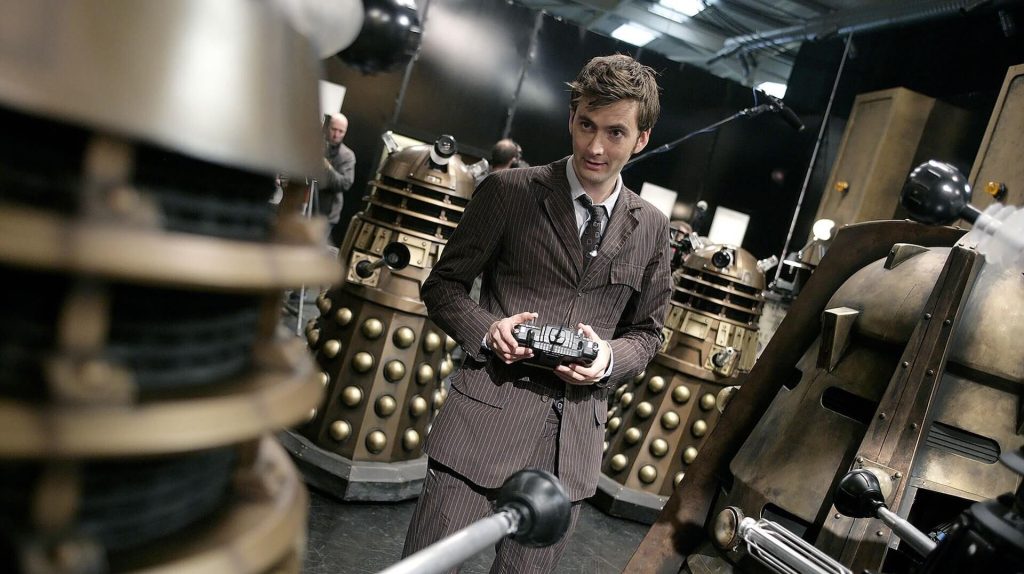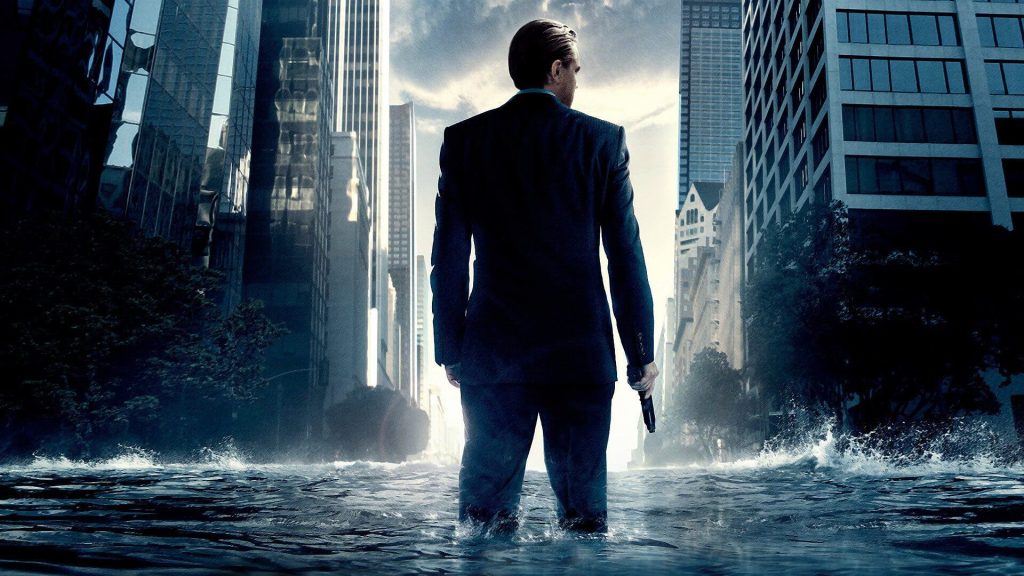Part of the fun of writing science fiction is using your imagination to create new speculative and theoretical technology in your fictional stories. The whole point of sci-fi is to take technology and science to the next level as you showcase the human reactions to the benefits, the dangers, and how those advancements affect society of those sci-fi elements.
But how can screenwriters conjure futuristic technology that feels possible and believable enough to avoid readers and audiences having to suspend their disbelief to the point where it feels more like fantasy than potential scientific reality?
Seven Ways To Imagine Futuristic Technologies in Your Script
Here, we offer seven ways screenwriters can enhance their knowledge to imagine plausible future tech in their sci-fi stories.
1. Research Emerging Technologies
Research plays a vital role in any screenplay. When developing a sci-fi with story elements that involve speculative tech or science, doing the proper research will help you find the ability to take current tech and turn it on its head to envision the next possible step sci-fi tales could take.
The first step in imagining future tech is understanding what is currently on the horizon. You should do your best to stay informed about the latest developments in science and technological fields like:
- Artificial intelligence
- Biotechnology
- Space exploration
- Quantum computing.
- Conceptual War Technology
Websites, scientific journals, and technology-focused conferences can be invaluable resources. This grounding in reality makes the next speculative steps you take more credible and engaging.
For example, look at the technology in Steven Spielberg’s Minority Report.
The film’s speculative future tech was way ahead of its time and stands the test of time by predicting some of the technology we have today. Do your research and find those budding technologies.
Read More: 7 Things To Remember While Researching Your Screenplay
2. Engage with Futurists and Technologists
Part of your research can involve collaborating with scientific and technological influencers and professionals who can help keep you up to speed with what may be on the horizon.
Networking with experts specializing in predicting technological trends can provide insights into where technology might be headed. A few ways to do this are by:
- Engage with futurists
- Attending tech talks
- Consult with scientists
These practices can open up new perspectives and possibilities for your sci-fi stories.

‘Doctor Who’ (1963-)
3. Explore Science Fiction Literature and Media
Classic and contemporary sci-fi literature, films, and shows offer a treasure trove of ideas that have shaped expectations about the future. Sci-fi franchises and movies like Star Trek and 2001: A Space Odyssey have inspired technological concepts and advances. It’s all about taking what’s realized and familiar and pushing the boundaries even further to see what could be possible.
When you dive into the sci-fi genre on all platforms, you can build on the ideas, expand them, or take them in entirely new directions based on emerging scientific principles—and your creative design.
Read More: 131 Sci-Fi Scripts That Screenwriters Can Download and Study

‘2001 A Space Odyssey’ (1968)
4. Consider Societal Impact
Ask yourself:
- How might these innovations change the way we interact?
- How could the technology change how people work?
- Would this technological advancement affect how people govern themselves?
This approach adds depth to the narrative and engages the audience on a deeper philosophical level. It makes otherwise technical dynamics more relatable because the eventual audience will ponder the pros and cons of the future technology you imagine.

‘Inception’ (2010)
5. Humanize Technology Through Character and Story
The best sci-fi doesn’t just introduce new technology—it explores its impact on individuals and cultures. Screenwriters should weave technology into the personal stories of their characters:
- How does the tech help or hinder them?
- What conflicts does it create?
- How does it affect their relationships?
This human element makes the story more relatable and the technology more tangible.
Look at the film Her as a perfect example of this. It tells the story of a man who falls in love with the new artificial intelligence (AI) program on his phone.
Write/director Spike Jonze gave us a future technology based on then-current rising trends in technology. More than a decade later, the debate on AI is at an all-time high as AI technology has drastically changed with more and more advancements each month.
However, the screenplay and eventual film never bombarded us with the technical aspects of the future tech. Instead, it reached us through cathartic and empathetic paths by having a lonely man fall in love. We relate to new and exciting relationships. The audience lives vicariously through this character because we see relatable elements, perspectives, and emotions.
If you can weave your future tech designs into the characters and the narrative they reside in, you’ll be able to offer future technology that is subtle but powerful.
6. Use Visual and Contextual Descriptions Effectively
How technology is described in a screenplay can influence how it is understood by script readers and audiences. Always strive to provide clear, vivid descriptions that give production designers and directors a strong vision of what the tech looks like and how it functions.
How technology is described in a screenplay can influence how it is understood by script readers and audiences. Always strive to provide clear, vivid descriptions that give production designers and directors a strong vision of what the tech looks like and how it functions.
But there’s also a line you don’t want to cross.
Always avoid overly technical jargon unless it enhances the story or character development. It goes back to the old expression, “All I wanted to know was the time, and you went and explained to me how a watch works.”
We don’t need to know how the tech works unless, again, we use that knowledge to enhance the story or character development. Just show us the future tech in action.
Read More: How White Space Makes Your Screenplays Better

‘Andor’ (2022-)
7. Adapt to New Discoveries
Technology evolves rapidly, and what may seem cutting-edge at the time of writing could be outdated by the time you get an industry insider to read your script—let alone get your script produced. It could take years.
Always remain adaptable. Update your scripts as new information becomes available or as real-world technology surpasses your imagined tech.

‘Poor Things’ (2023)
—
By following these steps, you can predict future technologies and craft stories exploring the complex relationship between humans and the tech that surrounds them, making for compelling and thought-provoking narratives.
Read More: 5 Benefits To Constructing a Fictional Language
CHECK OUT OUR PREPARATION NOTES SO YOU START YOUR STORY OFF ON THE RIGHT TRACK!
Ken Miyamoto has worked in the film industry for nearly two decades, most notably as a studio liaison for Sony Studios and then as a script reader and story analyst for Sony Pictures.
He has many studio meetings under his belt as a produced screenwriter, meeting with the likes of Sony, Dreamworks, Universal, Disney, Warner Brothers, as well as many production and management companies. He has had a previous development deal with Lionsgate, as well as multiple writing assignments, including the produced miniseries Blackout, starring Anne Heche, Sean Patrick Flanery, Billy Zane, James Brolin, Haylie Duff, Brian Bloom, Eric La Salle, and Bruce Boxleitner, the feature thriller Hunter’s Creed, and many Lifetime thrillers. Follow Ken on Twitter @KenMovies and Instagram @KenMovies76
The post 7 Exciting Ways To Envision Futuristic Tech in Your Script appeared first on ScreenCraft.
Go to Source
Author: Ken Miyamoto

